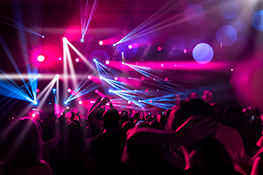Stage Lighting Design Secrets: Expert Tips & Tricks for Stunning Productions
Understanding the Fundamentals: Light, Color, and Mood
Before diving into advanced techniques, mastering the basics is crucial. Effective stage lighting hinges on a deep understanding of how light interacts with color and sets the overall mood. This involves selecting the right fixtures – from LED pars and profiles to moving heads and Fresnels – based on their specific functionalities and beam characteristics. Learn to manipulate color temperature (Kelvin) to evoke various feelings: cool blues for serenity, warm ambers for intimacy, or vibrant reds for passion. Experiment with different gels and filters to achieve the precise color palette your production requires. Consider the interplay of light and shadow – strategically placed shadows can add depth, mystery, and drama to your scenes.
Harnessing the Power of Light Plotting Software
Modern stage lighting design relies heavily on sophisticated software. Programs like Vectorworks, WYSIWYG, and Capture allow designers to visualize their lighting plots before the actual setup. This pre-visualization is invaluable, preventing costly on-site adjustments and ensuring a smooth, efficient production workflow. Learn to master the features of your chosen software, including 3D modeling, fixture patching, and cue scheduling. Familiarity with these tools will elevate your design process to a whole new level of precision and creativity.
Mastering the Art of Cueing and Sequencing
A well-crafted lighting cue is more than just turning a light on or off. It’s about crafting a seamless transition, adjusting intensity, color, and movement to enhance the narrative. Explore different cueing techniques: crossfades for smooth transitions, chases for dynamic sequences, and strobes for impactful moments. Understanding the timing and pacing of your cues is essential to synchronizing your lighting with the action onstage. Practice creating subtle changes in light levels to underscore emotional shifts or highlight key moments in the performance.
Beyond the Basics: Advanced Lighting Techniques
To truly elevate your stage lighting designs, explore advanced techniques. Learn about gobo projection for creating textured patterns and adding visual interest. Master the art of backlighting to create silhouettes and depth. Experiment with special effects like moving lights to dynamically alter the stage environment. Understand how to effectively use color mixing to create a wide range of colors and hues. Consider incorporating practical lighting elements within the set design for an immersive experience.
Working with the Entire Creative Team: Collaboration is Key
Successful stage lighting is a collaborative effort. Open communication with the director, set designer, and other technical crew members is crucial. Attend rehearsals to understand the pacing, blocking, and overall aesthetic of the production. Share your lighting ideas and actively listen to feedback from the team. A collaborative spirit ensures a cohesive and stunning final product that perfectly complements the overall vision of the show.
Staying Updated: The Ever-Evolving World of Stage Lighting
The field of stage lighting is constantly evolving with new technologies and techniques emerging regularly. Staying updated is essential to maintain your edge. Attend workshops, conferences, and training sessions to learn about the latest lighting equipment and software. Explore online resources, read industry publications, and network with other lighting professionals. Embrace continuous learning to hone your skills and stay ahead of the curve.
SEO Keywords:
Stage lighting design, lighting design tips, stage lighting techniques, lighting plots, lighting software, lighting cues, lighting effects, theatrical lighting, event lighting, lighting design secrets, gobo projection, backlighting, color mixing, LED lighting, moving head lights, Fresnel lights, PAR lights, lighting design for theatre, lighting design for events, lighting design for concerts.


 Auditorium Construction Services
Auditorium Construction Services 